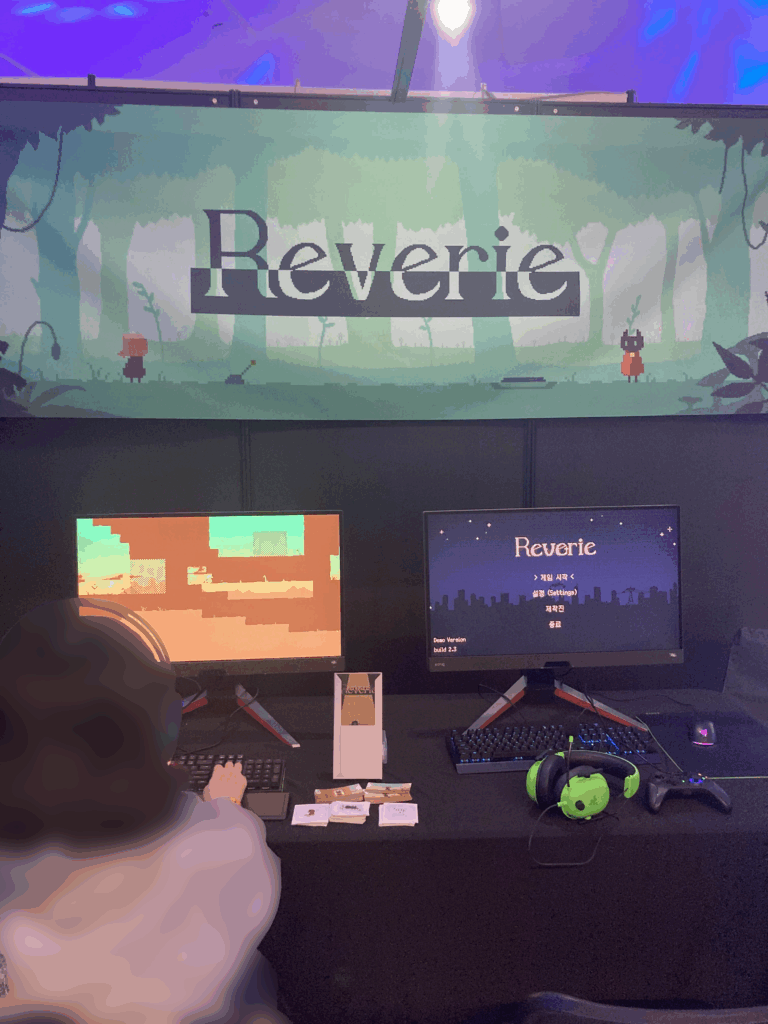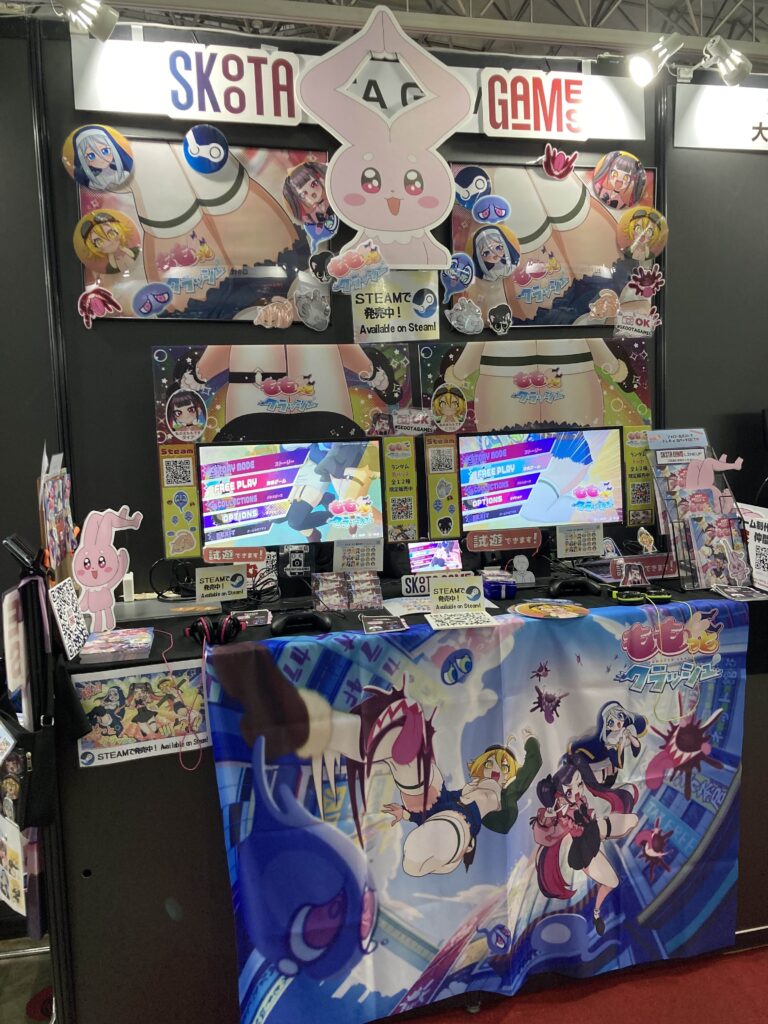
Now, with the excitement of the 【first part】 still fresh, the report continues into the 【second part】. I, Mob, will continue to talk about three shining gems that I found amidst the bustle of Makuhari Messe.
In the 【first part】, I introduced works that evoke different philosophies: a Chinese game that confronts the absurdities of modern society, a Russian game that radiates a strong atmosphere transcending language barriers, and a German game that delivers an overwhelming “experience” beyond logic. In such a massive festival, the individuality encountered in its corners stands out even more.
And in the 【second part】, I will introduce games from different countries, yet equally filled with intense energy. What was present there was a pure “heat” reminiscent of the creators’ initial impulses, which cannot be explained by logic or sophistication. Perhaps it was a pleasant “nostalgia” that awakens memories of past obsessions. And it was the timeless “joy of reunion” that can only be experienced by continuously chasing indie games.
Now, let’s take a look at a game that brings the vibrant winds of South America.
Lucha Masters: Mighty Lucha: Unfathomable, yet palpable “heat”
Now, the first game I would like to introduce in the 【second part】 is ‘Lucha Masters: Mighty Lucha’, which comes from Mexico. My encounter with this game began with a strange introduction video. A man happily munching on tacos, while an axolotl sneaks up from behind to snatch the tacos and escape… To be honest, I couldn’t glean anything about the game’s content from that video, but it had more than enough impact to spark a strong curiosity: “What on earth is this?”
After actually playing at the booth, the feeling of “What on earth is this?” deepened even further. This game is an action-adventure that can be played by up to four players, depicted in a nostalgic 8-bit style. In today’s indie game scene, where many titles boast unique ideas and innovative systems, a work like this, which embodies the spirit of classic arcade games and is, in a sense, very “straightforward,” felt fresh and strongly caught my attention.
However, despite its nostalgic appearance, the difficulty was quite high. Enemies appeared one after another, and the gimmicks were not easy to handle… I found myself exhausted in the same spot multiple times, and ultimately, after my third attempt, I had to reluctantly put down the controller in tears.

Normally, I might have just thought, “This game wasn’t for me,” and left it at that. However, this game had a mysterious “energy” that transcended such reasoning, drawing players in and making them want to know its true nature. After looking into it later, I felt I could understand a bit of the source of that energy. This game tells the story of “Lucho,” an axolotl who fights to defeat the god of death “Mictlantecuhtli,” who appears in traditional Mexican legends and myths, particularly Aztec mythology.
I see, I thought, as I hit my knee. The seemingly incomprehensible energy I felt from this game might have been a pure crystallization of the developers’ deep love and respect for their own culture (lucha libre, Aztec mythology), mixed with a strong ego akin to an initial impulse of wanting to pack in everything they found interesting. This is a brilliance unique to indie games that could never be produced solely through refinement or calculation.
By the way, despite repeatedly getting game overs, I was able to receive a small character figure from the gacha box set up at the booth. This small act of kindness saved my heart just a little, but that’s a secret.
Shin Yono no Me – The Yin-Yang Priestess: A Mysterious Dungeon Where Nostalgia and “Wa” Fear Intertwine

The next title I would like to introduce is the only work from Japan in this report, “Shin Yono no Me – The Yin-Yang Priestess”. This Japanese-style roguelike dungeon exploration game was showcased at the KADOKAWA Game Linkage booth, and those in their 20s or older may recall the “Mystery Dungeon” series created by Chunsoft. As someone from a generation that encountered this genre through the Pokémon series, I was able to play with a sense of nostalgia.
The story begins with the protagonist, a priestess named “Yono,” entering a mansion inhabited by spirits to search for her missing brother. Inside the eerie mansion, which changes its structure every time you enter, players control Yono, escaping or confronting the attacking yokai while aiming deeper into the mansion.
What makes this game interesting is that the protagonist, Yono, is essentially a powerless being without any means of attack. Therefore, instead of simply defeating enemies to progress, players must constantly think strategically, using items to set traps or understanding enemy positions to evade them. This “fragility” combined with the Japanese horror atmosphere creates a unique tension.


And what surprised me the most personally was the high quality of the sound. Even though it was a demo version, I was amazed that the character’s lines were fully voiced. More than that, the balance of environmental sounds and voice volume was very pleasantly adjusted, skillfully creating a sense of quiet fear. By the way, the voice of Yono saying “Moshi moshi” when checking if there is a yokai behind the door was, for me, very cute and left a strong impression.
Of course, the system of setting traps or attacking specific areas is not uncommon in games of this genre. However, seeing it reinterpreted as objects and settings that are not often encountered in games within the “Wa” worldview was a modestly enjoyable experience.
What was disappointing was that in this demo version, I couldn’t experience parts that touch on the core of the story, such as the diverse enemies and gimmicks seen in the preview video, and Yono’s other personality that appears when in a pinch. However, conversely, this means that my expectations for the full version have increased. I am now looking forward to the day when the full picture of this nostalgic yet new “Mystery Dungeon” will be revealed.
Reverie: A Puzzle of Reunion that Inverts Space and Memory
Now, concluding this Tokyo Game Show visit report is the puzzle adventure game ‘Reverie’, which has come from Korea. This work, standing in the Selected Indie area, stopped me in my tracks with its innovative system.
The core of this work lies in the unique rule of inverting “buried space” and “open space.” The space of black blocks where players can stand, and the empty space where they can move freely. These two properties can be swapped through specific actions. Places that were walls become paths, and paths that were walls become walls. This simple rule transformation created surprisingly deep puzzles.
Every time I encounter many puzzle games, I feel a simple surprise and respect, wondering, “How on earth did they come up with such an idea?” This is also the first step for me, who is not very good at puzzle games, to understand and enjoy the game. ‘Reverie’ also posed that question to me.
However, my encounter with this game became even more special because it was not my first meeting. In fact, I had previously experienced what seemed to be an early version of ‘Reverie’ at another event. I believe it was at last year’s “Burning Beaver” with Hana-senpai. From what I remember, this work seemed to be a more stoic, pure puzzle game. While I was drawn to its original art and worldview, I also remember feeling a bit frustrated by its high difficulty.

remaining in my smartphone gallery!

About 10 months later. The game ‘Reverie’, which I coincidentally reunited with at this world’s largest gaming festival, had certainly evolved from the image I had in my memory. This time’s demo was shorter in playtime than before, but it included more detailed explanations of the story introduction, characters, and world view.
When following indie games, there are times when you are blessed with such delightful reunions. Parts that I had previously felt were a bit lacking, or aspects I secretly wished would be better, have been beautifully complemented over time and presented in a way that reaches more people. This is one of the irreplaceable joys for indie game fans.
Once a work that resonated only with pure puzzle lovers, ‘Reverie’ has grown into a deep piece that gently welcomes players attracted by its unique atmosphere. It is precisely because I was able to witness this delightful change that I wanted to choose this game to conclude this long report.
At the End of the Report

Now, we have introduced six unique indie games from six different countries in the 【first part】 and 【second part】, how did you find them?
The absurdity of modern society presented by China’s “Thank you for your application.” The atmosphere of crossing language barriers depicted by Russia’s “SOBAKISTAN.” The power of experiences that transcend logic showcased by Germany’s “PVKK.” The overwhelming passion bursting forth from Mexico’s “Lucha Masters.” The nostalgia and new fears awakened by Japan’s “Shin Yonnonome – The Yin-Yang Priestess.” And the story of joyful reunions and certain growth shown by Korea’s “Reverie.”
What these six works had in common was that, even amidst the hustle and bustle of the massive festival known as TGS, there was an undeniable “soul” of the creators that resided at their core, never to be buried.
The brilliance of major titles is indeed wonderful. However, being able to touch the diverse, sometimes distorted, yet endearing brilliance that emerges from creators in different countries and cultures, who diligently pursue their own belief of what is “interesting,” may very well be the greatest pleasure of walking through the indie game area at the Tokyo Game Show, as I have come to feel once again.
The six different “questions” they posed have once again provided me with much stimulation and several assignments. Now, what form will my “answers” take? That is another story.
Well then, let’s meet again in the next report.
